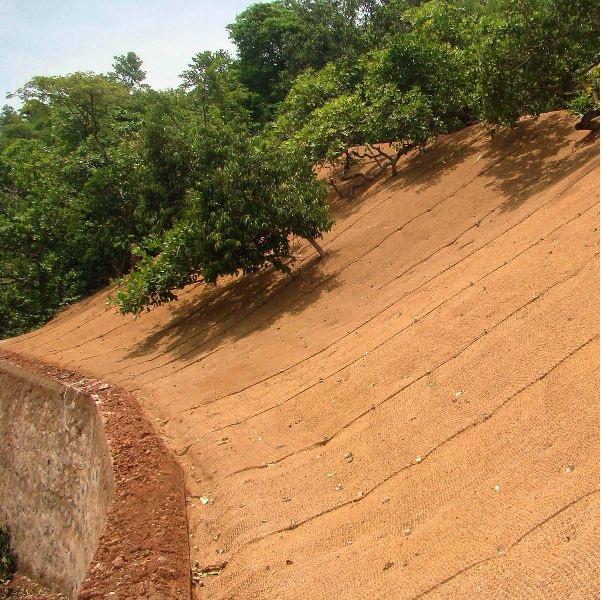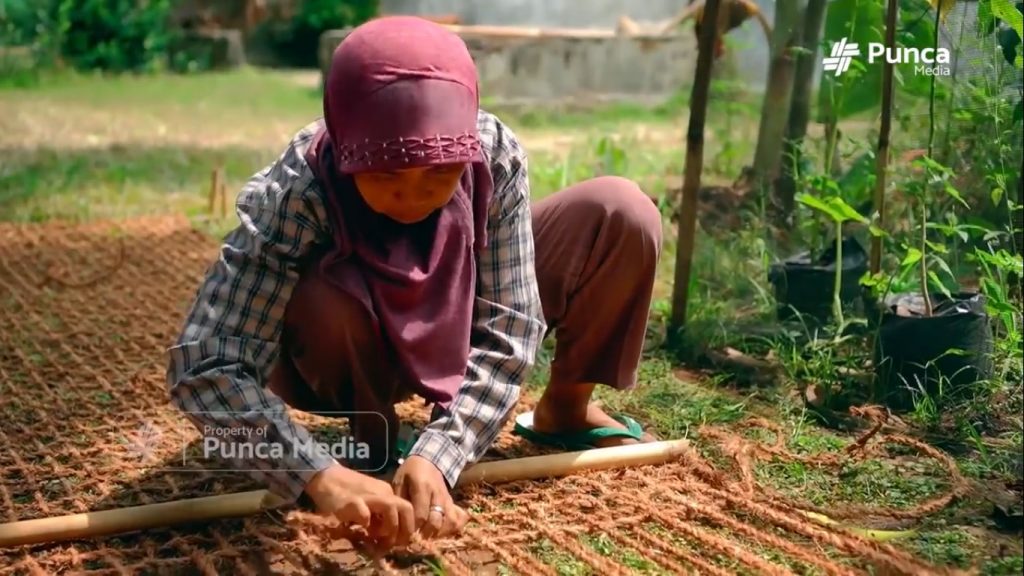
Coir geotextiles – Cocomesh or Coconut Coir Net is a net-shaped material made from coconut coir. This material is very environmentally friendly in helping the reclamation process of a mine, beach, or forest. It has biodegradable and strong properties, helping to facilitate the growth of new plants in Cocomesh fields placed on ex-mining or other critical land.
The use of this coir geotextiles material has been proven to be able to reforest ex-mining land and denuded forests. Many greening consulting companies are turning to natural materials such as Cocomesh. The nature of the cocomesh material made from coconut fiber, which is able to store water for a long time, causes the soil surface covered by this material to be kept moist. This is able to affect the structure of the soil so that it is easy to plant with seeds. In addition, it is also cocomesh as a substitute for soil when planting these plant seeds.
The Categories of Coir Geotextiles
Coir Geotextiles are made from coconut coir that has gone through various processes. As a natural product, Coir geotextile is a product that is biodegradable and environmentally friendly. They are divided into 2 categories on the basis of the way they are prepared :
- Woven Coir Geotextiles
- Non-Woven Coir Geotextiles
- Woven Coir Geotextiles
This form is the simplest. The coir geotextile is made traditionally manually using the 2 shaft weaving technique. This form is used primarily for erosion control applications. The of this variations are made according to the intensity of rainfall, soil type, and surface slope. Each variety can be identified by weight per m2, and yarn type.
- Non-Woven Coir Geotextiles
The type of coir geotextiles is often referred to as coir filter fabrics. Made from the same materials as non-woven coir geotextiles in the form of sheets and not by weaving. Coconut coir fibers are pressed and heated with special glue.
Cocomesh Manufacturing Process

Materials and tools :
• Coir that is a bit old
• Coconut Coir Decomposer
• Coir spinning machine
Making coir geotextiles process :
- Prepare coconut coir that is quite old
- Grind the coconut skin into coir with a coir decomposing machine
- Dry the ground coconut coir to dry
- Spin the coir into a mine with the coir spinning machine
- Knit mine into a net (cocomesh)
- Coconut coir net/cocomesh is ready to use
Coir Geotextiles Uses and Functions
The mode of operation of a coir geotextile in any application is defined by three discrete functions :
- Filters
Coir geotextile has high permeability properties so that it is able to drain water through the coir geotextile material. The flow of water will carry soil particles, so this is where the geotextile coir functions as a filter where water can still flow but soil particles do not penetrate the geotextile coir material.
- Separator
Coir geotextile has been known as an effective material to prevent the mixing of soft soil with soil pavement on it, for example, in the case of road construction on soft soil. Often the soft subgrade moves up. The role of the geotextile coir is to prevent the soft soil from rising to the pavement.
Because of one, the advantage of coir geotextile is that it has good stretchability and can withstand the friction force that occurs so it is very suitable to be used as a separator between soft soil and the pavement above it.
- Sealing
A layer of non-woven coir geotextile is impregnated in between existing and new asphalt layers. The geotextile absorbs asphalt to become a waterproofing membrane minimizing the vertical flow of water into the pavement structure.
The scope of coir geotextile in the engineering field is very vast. The application of coir geotextile is given under the heading of the nature of work.
From the coir geotextiles uses and functions above, it can be seen that there is a big difference between functions and applications. These various functions can be fulfilled mostly by coir geotextiles.
Leave a Reply